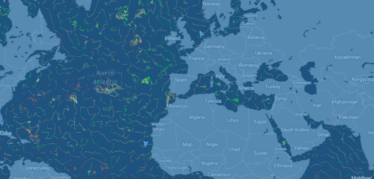Every day, traders and risk managers are faced with massive quantities of commercial and operational information. Markets are moving, traders are negotiating deals, and operators are running voyages, all at the same time. The sheer volume of data can be overwhelming.
In order to properly manage your risk and market exposure, each data point must be internalized, analyzed, and realized as an actionable piece of information; but managing these necessary functions through excel spreadsheets, emails, and disparate data sources puts significant pressure on your back-office or administrative team. In the time it takes to manually convert data into actionable insights, your team is forced to operate on a continuous delay. With markets, traders, and operators in constant motion, this delay can result in risk and market exposure as well as missed opportunities.
In today’s volatile market, it’s critical for trading desks and risk managers to have constant visibility into daily position, exposure, and both realized and unrealized P&L. But as business moves at an ever-increasing pace, it is becoming more difficult for organizations to get the insight they need, when they need it.
Learn how to drive optimal decision-making through dynamic position visibility and streamlined pricing and benchmarking: download the Trading & Risk Module information sheet.
As it turns out, you do not need to radically change your business in order to adapt for the future – you just need the right tools. Outlined below are some key ways to digitalize your trading workflows to mitigate risk and safeguard long-term success.
1) Sync up your data for dynamic position visibility
Merging all your data streams into one, integrated workspace is the most efficient way to get a transparent and accurate view of your position in the market. By leveraging digital technology, traders and risk managers can automatically combine planned and actual voyage results with external price feeds to instantly calculate their position and mark-to-market P&L. Ideally, traders and risk managers should also be able to drill down and sort data by vessel type, cargo trade area, counterparty, trader, trade strategy, and more at any given point in time.
2) Automate your exposure
For both traders and non-traders alike, it is incredibly important to have visibility into and management of your exposure. Tracking and calculating exposure manually can cost you time and effort, bog down your operations, and increase risk of error. A digital solution can integrate trading activities with the rest of your workflow, enabling comparison between estimate and actual voyage results, alongside market price feeds – enabling an accurate understanding of your position and mark-to-market P&L at any given point in time.
3) Visualize market shifts & analyze potential impact on P&L
By digitalizing trading workflows, it is easier than ever to gain visibility into how the market is shifting as well as how market movements impact your bottom line. Streamlining the management and calculation of your daily trading P&L allows you to easily report on unrealized results and mark-to-market valuations of both physical and paper trades. Interactive, visual dashboards that pull from all your data flows can also enable your team to quickly glean actionable insight from trading & risk information in real time and share across the organization.
A Digital Solution for Trading & Risk Management
In order to efficiently mitigate risk and secure long-term gains, trading desks and risk managers need a software platform to integrate data and automate workflows for faster, better decision making. The Veson IMOS Platform’s Trading & Risk solution simplifies the management and calculation of a daily trading P&L, enabling users to report on the unrealized result and mark-to-market valuation of both physical and paper trades at the push of a button, and uncovers ways for companies to be profitable regardless of market conditions.
With the Veson IMOS Platform, your risk position is calculated in real-time, automatically, on-demand. The Platform’s powerful trading engine is fueled by the everyday actions of your commercial freight operations team, in conjunction with market data which flows into the system through integrated feeds such as Baltic, Platts, and Marex Spectron, among others. This information populates a comprehensive exposure grid, presenting the data you need in order to properly manage risk.



 Russ Hubbard
Russ Hubbard
 Aidan Williams
Aidan Williams